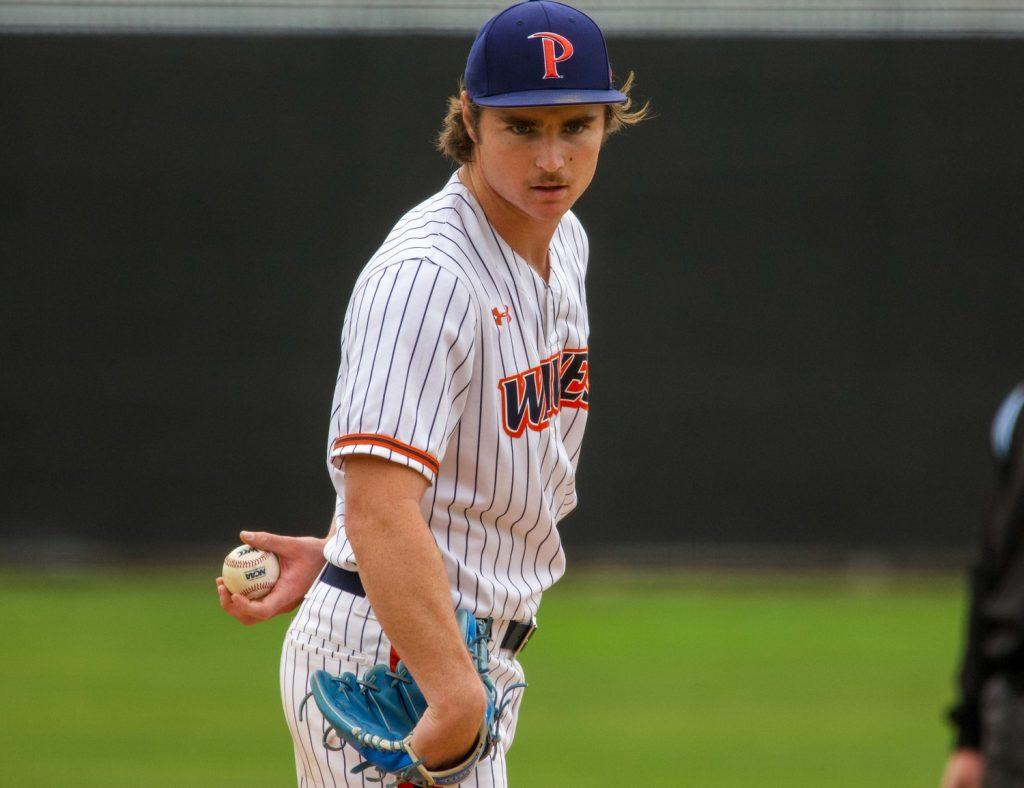
You only have 20 seconds. What could you do in those 20 seconds? Watch a TikTok? Send a text? Perhaps, tie your shoes? Some people can solve a Rubix Cube in this timeframe. But, what is most surprising is how collegiate and professional pitchers have 20 seconds, or less, to perform at their highest caliber, over and over and over again – and some pitchers do this every five days.
In 2022, Major League Baseball announced to its fans three changes for the 2023 season. Within these three rules lays the pitch clock, which requires pitchers to start their wind up before it expires, batters to be ready to hit at eight seconds and limits pick off attempts in order to quicken pace of play, according to the MLB.
“The benefit of it has not really saved the game, but helped save the game from people losing interest in it,” said Ned Colletti, Professor of Sport Administration and former general manager for the Los Angeles Dodgers (‘05-‘14). “I don’t think it was the time of the game that people started to look at, it was the pace of the game., Especially in this era as life goes on, things get faster, life gets faster.”
New Era Comes With New Changes: The Pitch Clock Overview
When initially introduced in 2011, a 20-second countdown applied only when no runners were on base, alongside a 90-second timer between innings. Batters were required to be ready to hit with five seconds remaining, or else, “no pitch will result and either a ball or strike is called depending on the violation and any ensuing play is nullified,” according to the NCAA.
Enforcement was inconsistent until the 2020 season, when the NCAA increased the between-innings clock to 120 seconds and directed umpires to enforce stricter adherence to the rules. By 2023, the pitch clock rules expanded to include runners on base and disengagements — how many times the pitcher can step off the rubber. Now, pitchers must step off, pick off, or pitch to avoid penalties, with immediate consequences for infractions. Additionally, the NCAA introduced a visible on-field timer for Division I games starting Jan. 1, 2023.
To Colletti, he said Generation Z played dividends in the collegiate and professional levels’ interest in quickening the pace of the game, claiming both as the catalyst and key components to the updates.
“There’s so many different things to do, there’s so many different ways to spend your time,” Colletti said. “So, it was a bright move to kind of quicken the pace, and by doing that, you also shorten the game.”
That pace sped up by a wide margin. Upon the first year of its implementation, the pitch clock chopped 24 minutes from total game time during the 2023 MLB season. The average game time during this season was two hours and 40 minutes, one of the lowest averages since 1985 with this being the first time the game has dipped below the three hour mark since 2015, according to NBC New York.

Is It Hard to Adjust to New Rules?
Collin Valentine, sophomore Pepperdine Baseball left-handed pitcher, said as a high school athlete coming into a Division I college, the hardest transition wasn’t the clock, but the skill ceiling of the other players.
“Going from high school to the Division I level, every hitter from top to bottom is much better than the average high school hitter, so you really have to be focused at all times,” Valentine said. “There were some times in high school where maybe you could loosen up a little bit and just sort of get the guy out without really having to lock in.”
One area that was impactful for his transition in both Division I play and the pitch clock was staying mentally focused. As a college pitcher, Valentine said he stresses the importance of having that strong mental approach and focus, however, too much time to focus can be a double-edged sword.
“You can’t really take too much time between pitches and really think about it, so maybe that’s a good thing,” Valentine said. “You just have to sort of clear your mind and go.”
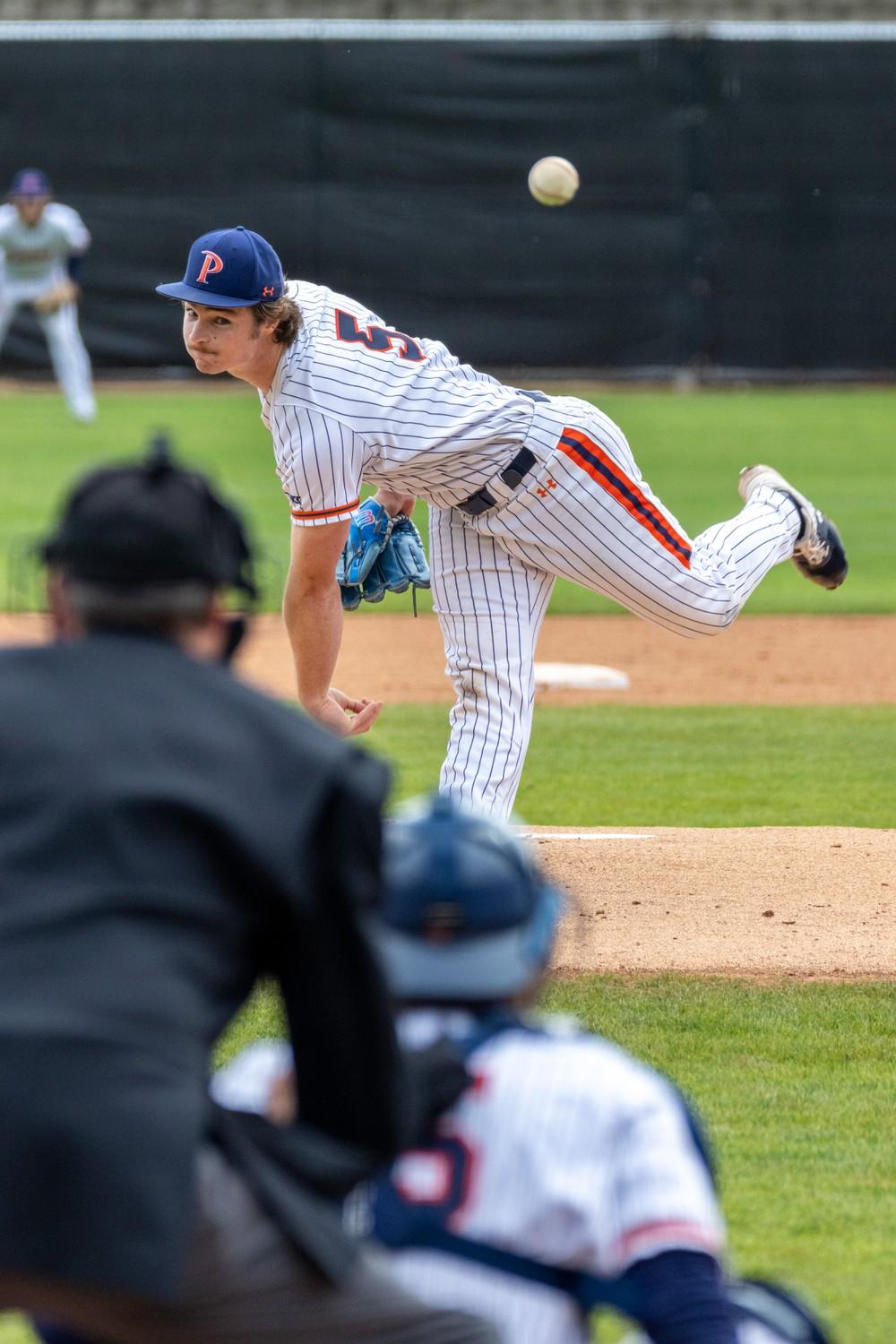
Valentine said he attended the University of Texas at Austin last year, but did not get innings on the field, so coming into Pepperdine for the 2024 season was his first taste at the clock. For him, the clock is something that doesn’t cross his mind often, but instead something he enjoys. He typically works pretty fast on the mound, and enjoys the clock because it does speed up the game.
As a way to adjust, Valentine said the coaching staff puts emphasis on pitch clock drills and practices to get everyone ready for the clock, but more specifically, for new incoming players who aren’t familiar with it.
This quickness only affected Valentine’s play minimally, with only areas like shaking off pitches being truly impacted by the clock. Valentine said sometimes, he would look over to his coach to shake off, but if his coach wasn’t looking back, the clock would force his hand.
“There are a few times where I would look to coach and shake, but he was maybe looking at the scouting report or something, and we weren’t able to communicate that,” Valentine said. “Due to the pitch clock and not having enough time, I would have to go with what he called and just sort of go with it.”
On the other hand, Valentine said the clock hasn’t affected him as much as other players because of his body type. Some pitchers are bulkier, heavier and overall bigger, and for them the transition can be much harder.
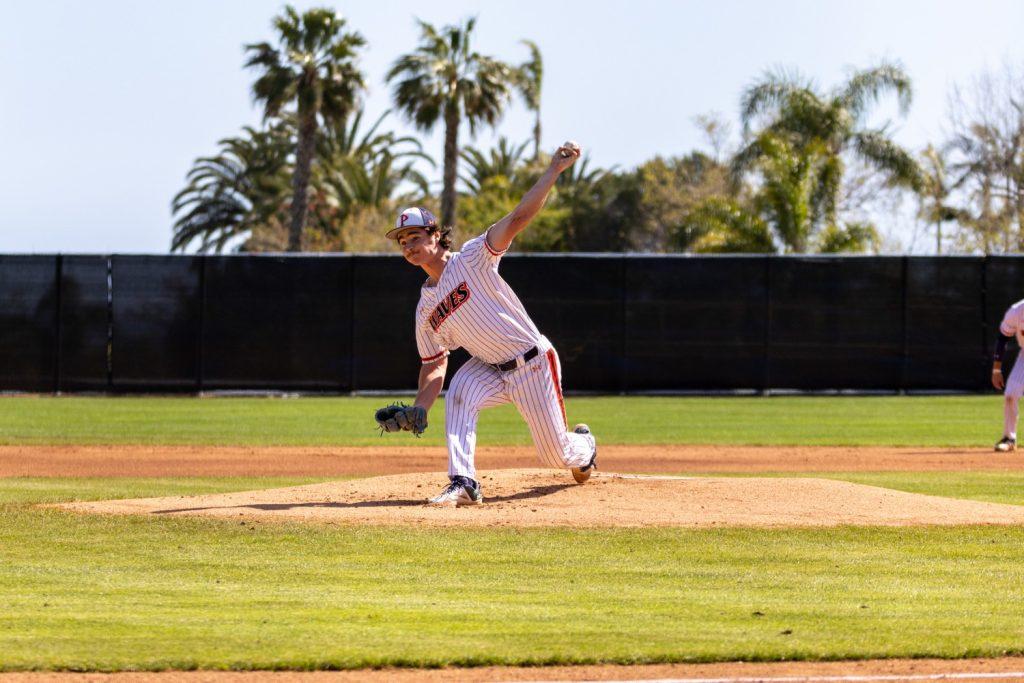
“It can also be a little more taxing on the body, just because some of those bigger guys — guys that weigh a little more — they like to use more time to recover in between pitches,” Valentine said. “With the pitch clock, they don’t have as much time anymore.”
Shane Telfer, former Pepperdine Baseball left-handed pitcher (‘20-‘23) and current Arizona Diamondbacks minor league pitcher, said he echoes Valentine’s sentiments around the clock, all stemming from his already faster pace on the mound.
Telfer was at Pepperdine during the early life cycles of the clock, specifically the second version of rule updates that occurred prior to the ‘20 season. He said because of this, the clock wasn’t something viewed as entirely important and was an area coaches tended to disregard. Going from college to the minors, he can only recall situational moments being affected by the clock, like bases loaded and no outs, and when he really wanted to take a breath but it’s a race against the clock.
“There are times I look up and see the clock winding down and I realize I can’t catch a breath,” Telfer said. “You just gotta get ready and throw.”
For both of these pitchers, the pitch clock hasn’t altered their pre-game routines and warmup practices. Telfer said what really helped him transition was recalling a classic statement as old as the game: Practice like it’s the game.
“If I could give any advice it would be to practice like it’s the real deal,” Telfer said. “Get used to the clock early, so when it’s time to buckle down, you’ll get the adjustment out of the way early.”
Looking Into the Future: The Clock’s Time Is Just Beginning
Both Telfer and Valentine said the pitch clock has been almost an afterthought. They viewed the clock as mutually beneficial due to its nature of speeding up the game, and also said that communication between the catcher and coaches has been more fluid.
One area that is still gray are pitcher injuries, something Telfer, Valentine and Colletti said was already on the rise dating back before the clock. Colletti speculated that the timing was just a bit off considering the direction the game was headed.
Between 1974 and 1994, only 12 MLB players had to undergo Tommy John surgery — a surgery to repair a torn UCL in the elbow — but the next 5 years, from 1995 to 1999, that number jumped up to 22. Unfortunately for most pitchers, it would be a name they heard throughout their careers as from 2000 to 2011, there were 194 surgeries performed at the MLB, and another 275 in the MiLB, according to Samford University.
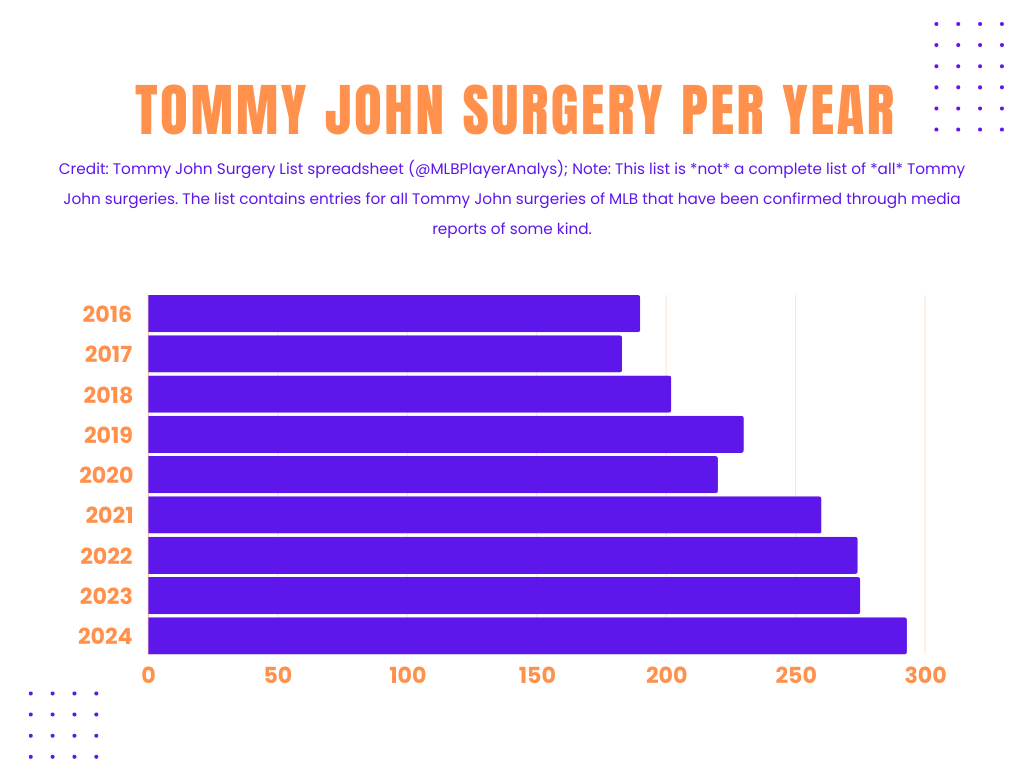
“Something else that has kind of gone in parallel to this is the push to have pitchers throw as hard as they can,” Colletti said. “Certainly you’re drawn to velocity, but I was always drawn to those who could pitch, and I was around a lot of great pitchers, a lot of Hall of Fame guys that by the end of their careers were throwing in the mid 80s. Today, they wouldn’t have a chance, but they knew how to pitch.”
This push for velocity has been something slowly encouraged within the sport over the last decade or so, as owners and GMs have pushed to not only draft pitchers who can reach the triple digit mark, but also spend the capital to trade for these prospects or major-league-ready arms each and every year, as detailed by the Washington Post.
Since the Statcast era (2015), the number of 100 mph pitchers or faster thrown has grown almost every year, according to Baseball Savant. In ‘15, this count finished at 1389 pitches, and at the conclusion of the ‘23 season, this count ended at 3880 pitches.
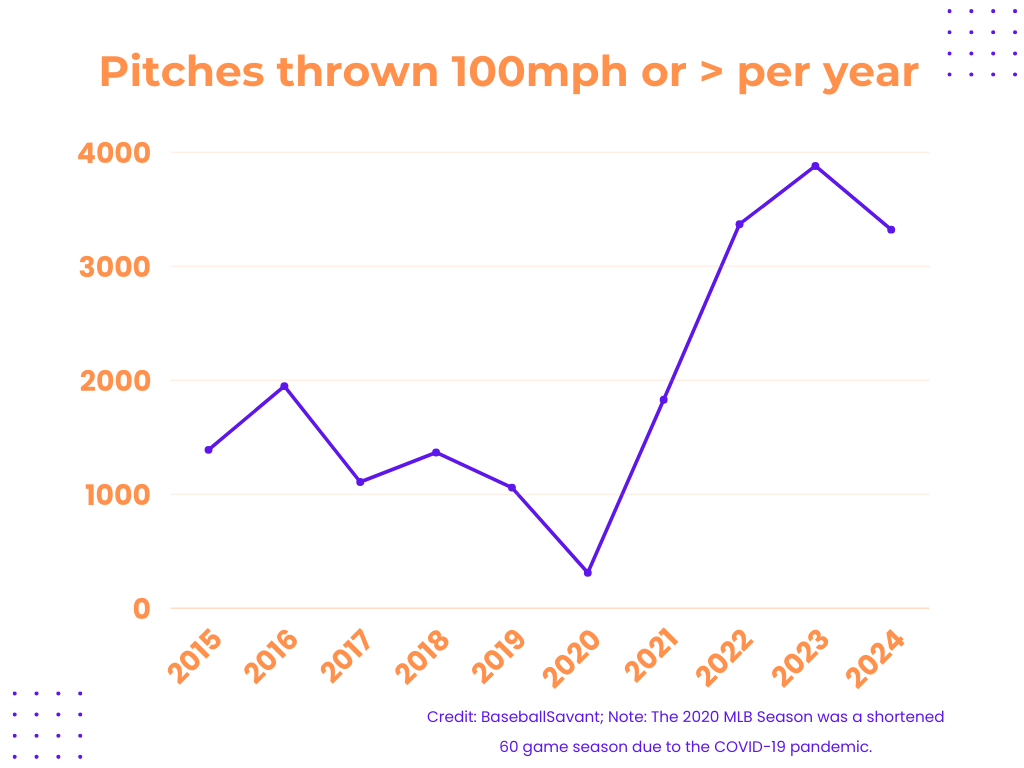
However, Colletti said if you’re an athlete competing, especially at the highest level, you always have to be able to adjust
“You’re in a constant state of adjustment — the best ones pitch to pitch. Good ones at bat to at bat,” Colletti said. “But you always have to adjust whether it’s a rule, or whether it’s just a competition inside the game.”
If he could make any changes to the clock, Colletti said he’d add a few seconds to playoff games.
“I might add a little time in the month of October, a little bit, not a lot,” Colletti said. “I think when you get to October, people are a little bit less concerned with pace than they are with outcome.”
College baseball incorporated the clock for the fans. Major League Baseball incorporated the clock for the fans and the fans seemed to enjoy the change. Gaming Today surveyed over 1,000 MLB fans across the United States during the 2023 season, the inaugural season of the clock, and one major thing was certain; fans of the game loved the faster-paced games – three out of every five fans to be exact.
It is unclear what baseball has in store for its athletes and fans moving forward, but one thing that is clear is the clock is here to stay.
___________________
Follow the Graphic on X: @PeppGraphic
Contact Justin Rodriguez via email: justin.rodriguez@pepperdine.edu
